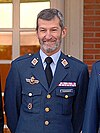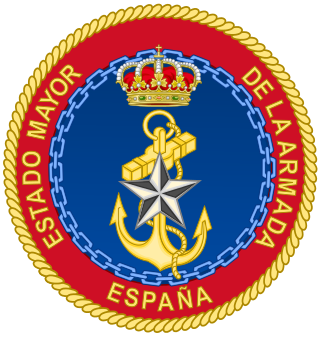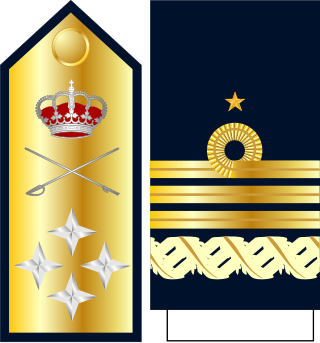| Chief of the Defence Staff | |
|---|---|
| Jefe del Estado Mayor de la Defensa | |
 Coat of Arms of the Defence Staff | |
 Flag of the Chief of the Defence Staff | |
| Spanish Defence Staff Ministry of Defence | |
| Style | The Most Excellent |
| Type | Highest-ranking military officer |
| Abbreviation | JEMAD |
| Member of | Defence Staff National Defence Council National Security Council Council of Chiefs of Staff Council of State |
| Reports to | Prime Minister Minister of Defence |
| Seat | Vitruvio Street, Madrid |
| Nominator | Prime Minister After being discussed in the Council of Ministers |
| Appointer | Monarch Countersigned by the Prime Minister |
| Constituting instrument | Basic Criteria of National Defence and Military Organization Act of 1984 |
| Precursor | Chairman of the Board of Chiefs of Staff |
| Formation | 11 January 1984 |
| First holder | Admiral general Ángel Liberal Lucini |
| Salary | € 122,000 per year |
| Website | (in Spanish) Website of the Defence Staff |
The Chief of the Defence Staff (Spanish: Jefe del Estado Mayor de la Defensa, JEMAD) is the highest-ranking military officer in the Spanish Armed Forces and is the principal military advisor to the Prime Minister, the Minister of Defence, the National Defence Council and the National Security Council. It is the fourth military authority of the country after the Monarch, the Prime Minister and the Minister of Defence because the Secretary of State for Defence and the Under-Secretary of Defence do not have military authority.
Contents
- Organization and assistants
- History
- List of chiefs of the Defence Staff
- Timeline
- See also
- References
The JEMAD has three different roles: the support role, assisting and advising the Prime Minister and the Minister of Defence in military affairs and supports the Under Secretary of Defence in its duties over the military personnel; the strategic role, being the official in charge of design the military strategy, directs the military operations and the actions to guarantee cyberspace freedom (with the supervision of the Minister), assign the military forces for the missions and give orders to the other Chiefs of Staff to appoint new commanders; and the preparatory role, coordinating the Chiefs of Staff and giving orders to them to prepare the troops, oversees the internal organization of the different branches, establish the common rules and regulations of the Armed Forces, ensures compliance with military discipline, staff motivation and their well-being and establish the organization of the Armed Forces (in coordination with the others Chiefs of Staff). [1]
The Chief of the Defence Staff convenes the meetings and coordinates the efforts of the Defence Staff (EMAD), an auxiliary body of command and support to the Chief of Defence Staff comprising the Chief of the Defence Staff, the Chief of the Joint Defence Staff, the Commander and Deputy Commander of the Operations Command, the Director of the Armed Forces Intelligence Center, the Chief Commander of the Joint Cyberspace Command, the Director of the Higher Center for National Defence Studies, the Admiral of the Fleet, the Chief General of the Air Combat Command of the Air Force and the Chief of the Military Emergencies Unit. [2]
Although in some legally established situations the Chiefs of Staff of the Army, Navy and Air Force advise the Chief of the Defence Staff, they do not directly depend from the JEMAD but from the Minister of Defence.



























